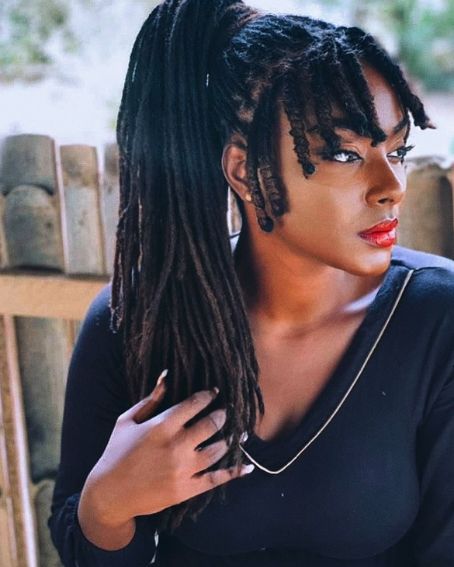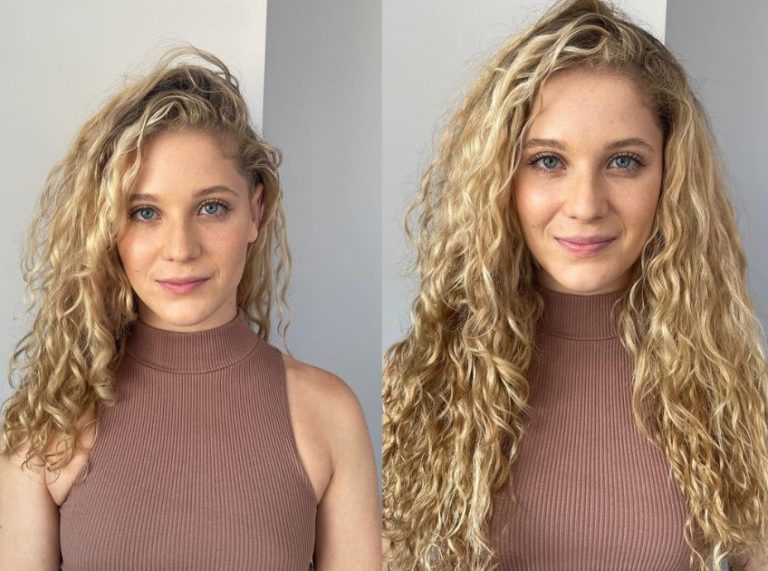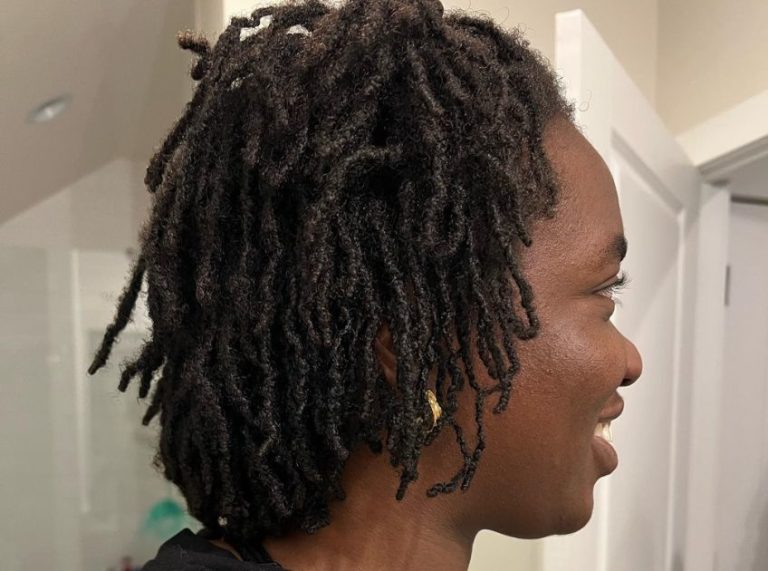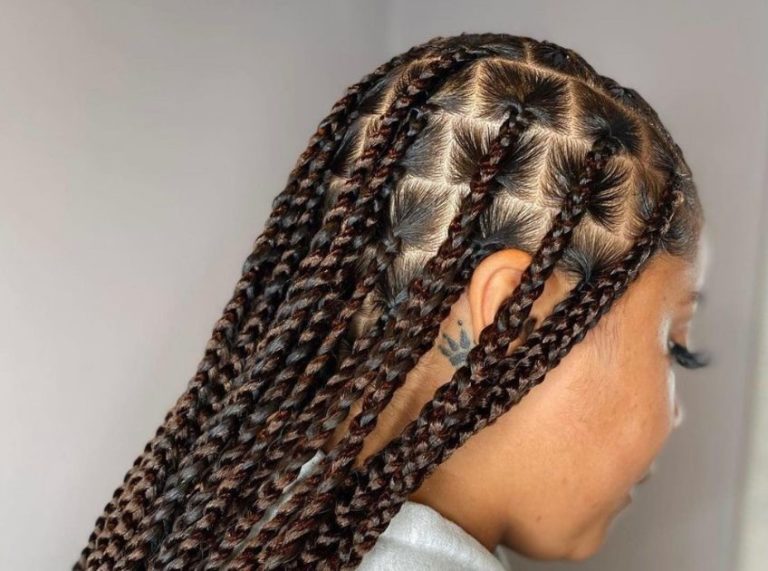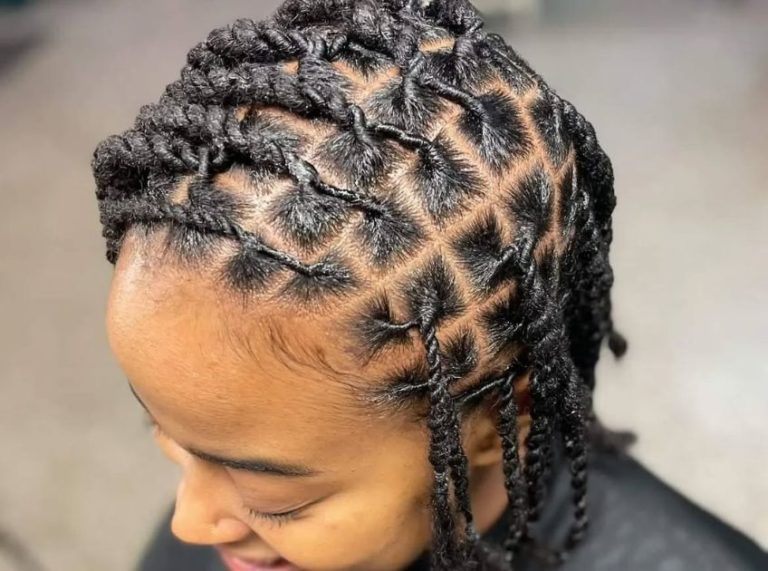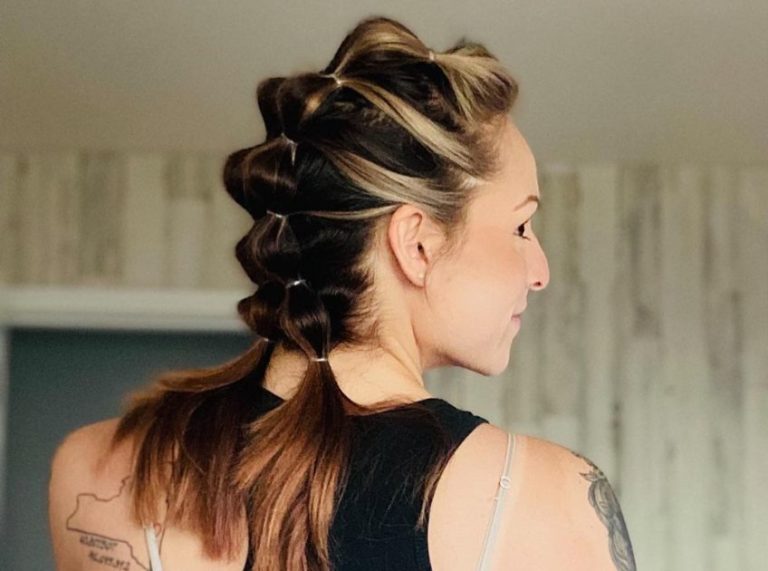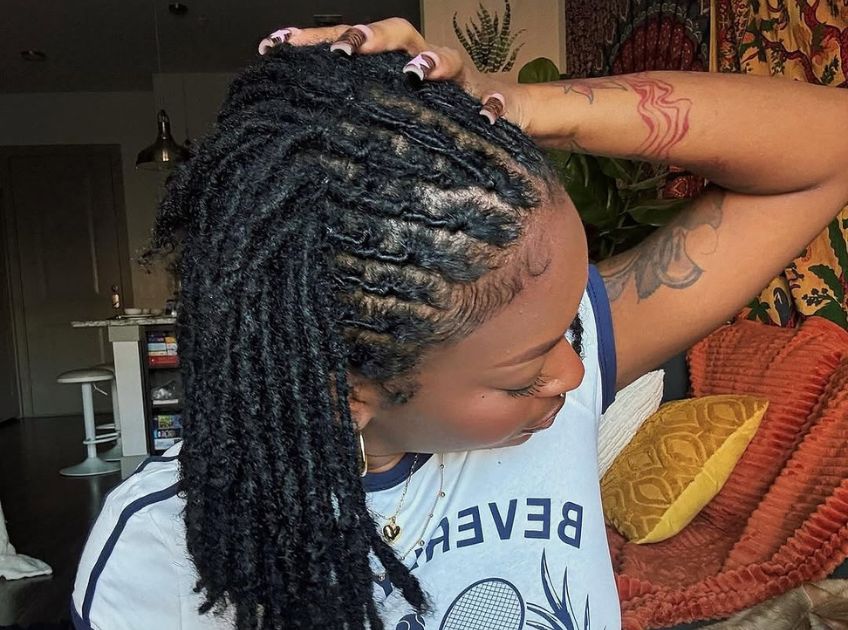
Important: This article is for informational purposes only. Please read our full disclaimer for more details.
Freeform locs are more than just a hairstyle—they are a personal and cultural expression of freedom, patience, and authenticity. Unlike manicured or retwisted locs, freeform locs form naturally with minimal manipulation, letting your hair lock and grow in its raw, organic state. If you’re ready to embrace a journey of natural beauty and self-acceptance, this guide will walk you through everything you need to know.
Freeform Locs: What Makes Them Unique?
Freeform locs are a method of locking hair without combing, parting, or regular retwisting. The hair is left to mat and lock on its own, resulting in unique loc shapes, sizes, and patterns. Common among those embracing a spiritual or holistic lifestyle, this style is often seen in the Rastafarian and Afrocentric communities.
There are two main types
- Semi-freeform locs: Some level of parting or retwisting is done occasionally.
- True freeform locs: No manipulation, no retwisting, and no interference—hair is left to loc naturally.
Why Go Freeform? Benefits You Should Know
- Low Maintenance: No constant retwisting or salon visits required.
- Healthier Scalp: Reduces scalp tension and breakage.
- Personal Identity: Each head of freeform locs is one-of-a-kind.
- Cultural Expression: Often tied to heritage, spirituality, and self-liberation.
- Budget-Friendly: Minimal products or styling tools are needed.
Getting Started: How to Begin Your Freeform Loc Journey
Essentials You’ll Need
You don’t need much—just patience and the right mindset. However, here are a few helpful items:
- Sulfate-free shampoo (Buy Here)
- Microfiber towel or cotton T-shirt
- Natural oils (e.g., jojoba, castor, coconut)
- Spray bottle with water (optional)
Your Freeform Locs Starter Guide: Step-by-Step
Starting your freeform loc journey can feel liberating, but also uncertain if you’re used to highly styled or maintained hair. Unlike traditional locs, the freeform method embraces patience, natural texture, and minimal interference. Here’s a full breakdown of how to begin your freeform locs from scratch—whether you’re starting from a TWA (teeny weeny afro) or longer hair.
Step 1: Begin with a Clean, Product-Free Base
Before starting, ensure your scalp and strands are free from product buildup.
- Wash your hair with a clarifying or sulfate-free shampoo to remove residue and excess oils.
- Avoid conditioners or deep treatments at this stage. They can soften the hair too much and slow down the tangling process.
- Gently towel-dry your hair using a microfiber towel or an old cotton T-shirt to reduce frizz and prevent breakage.
Expert Tip: The locking process begins more easily on hair that isn’t weighed down with product or overly moisturized. A clean start gives your hair freedom to tangle naturally.
Step 2: Ditch the Comb – Embrace Natural Matting
This is the heart of the freeform journey.
- After washing and drying, stop combing, brushing, or detangling your hair altogether.
- Allow your strands to naturally form knots, mats, and sections over time. This can feel uncomfortable at first—especially if you’re used to defined curls or styles—but it’s essential to the freeform process.
Expert Tip: Let your hair tell you where it wants to separate. Everyone’s freeform pattern is unique, and that’s what makes the look so powerful.
Step 3: Establish a Gentle Wash Routine
Keeping the scalp clean is key, even if you aren’t styling the hair.
- Wash your hair every 7–14 days using a gentle, residue-free shampoo.
- Focus on your scalp health: use the pads of your fingers to massage and lift buildup without disrupting the formation of locs.
- Rinse thoroughly and avoid using leave-in conditioners, gels, or heavy oils that can clog the locs as they develop.
Expert Tip: Avoid overwashing, which can slow the locking process, especially for looser curl types. Stick to a consistent but moderate cleansing schedule.
Step 4: Observe and Allow Natural Sections to Form
After a few weeks, you’ll notice clumps or sections starting to emerge.
- Avoid trying to “fix” them—even if some look bigger or smaller than others. This is normal.
- Over time, some sections may combine and form congos (multiple locs fusing into one). Whether you separate these is a personal choice and can shift you into semi-freeform territory.
- You can lightly separate only at the roots during washing if you want to avoid large congos, but resist manipulating the shape.
Expert Tip: If you’re concerned about extremely thick locs, you can gently separate sections while wet during the first few months. But don’t overdo it—respect the freeform nature.
Step 5: Moisturize Mindfully and Protect Your Hair
While freeform locs require minimal products, moisture is still essential.
- Lightly mist your hair with water 2–3 times a week or whenever it feels dry.
- Follow with a lightweight oil like jojoba, grapeseed, or sweet almond oil to seal in moisture. Avoid heavy butters or waxes—they can cause buildup in maturing locs.
- Sleep with a satin or silk bonnet or use a satin pillowcase to reduce friction and retain hydration.
Expert Tip: Spray bottles with aloe vera juice and rose water can be a great addition to your moisture routine, especially in dry climates.
Step 6: Stay Consistent and Trust the Process
The biggest part of the journey? Patience.
- Lok formation can take anywhere from 3 months to over a year, depending on your hair type, texture, and daily routine.
- Hair with tighter coils (Type 4B/4C) typically locks faster, while looser curls may take more time and need extra support (like wool rubbing or saltwater spritzes—but only if you want to accelerate the process).
- Don’t compare your progress to others. Every head of freeform locs is distinct, defined by genetics, scalp health, and personal care.
Expert Tip: Take monthly photos and document your journey. Seeing the subtle progress will keep you motivated when it feels like nothing is happening.
Optional: Semi-Freeform Tweaks (If You Prefer a Bit of Control)
If you want more structure while still embracing the freeform aesthetic:
- Lightly palm roll your locs every 4–6 weeks to keep individual sections defined without retwisting the roots.
- Separate at the roots gently after washing to prevent large matting.
- Use natural partings, but avoid rigid grid sections—let your hair retain its organic pattern.
Caring for Your Freeform Crown: Tips for Healthy Growth
- Cleanse Regularly: Use a sulfate-free, non-residue shampoo every 1–2 weeks.
- Moisturize Lightly: Mist with water and seal with light oils to prevent dryness.
- Avoid Heavy Products: Gels and waxes can cause buildup and block healthy locking.
- Protect at Night: Sleep with a satin bonnet or on a satin pillowcase to retain moisture.
- Be Patient: Freeform locs are a slow, natural process. Growth and locking patterns will vary.
Frequently Asked Questions (FAQ’S)
1. How long does it take for freeform locs to form?
A. It varies by hair type. Tighter textures may start locking in 3–6 months, while looser curls can take up to a year or more.
2. Can I shape or style freeform locs?
A. Yes, but minimal styling is recommended to maintain the freeform nature. Headwraps, beads, and natural parting are common.
3. Will my locs look messy or unkempt?
A. In the early stages, yes—but that’s part of the journey. As they mature, freeform locs become more defined and striking in their natural shape.
Final Thoughts
Freeform locs aren’t just a style—they’re a commitment to self-love, natural living, and inner growth. They require patience, confidence, and an understanding that beauty doesn’t always come from control—it often shines brightest when left to grow wild and free. If you’re ready to release expectations and celebrate your natural self, the freeform loc journey might be exactly what you’ve been waiting for.
